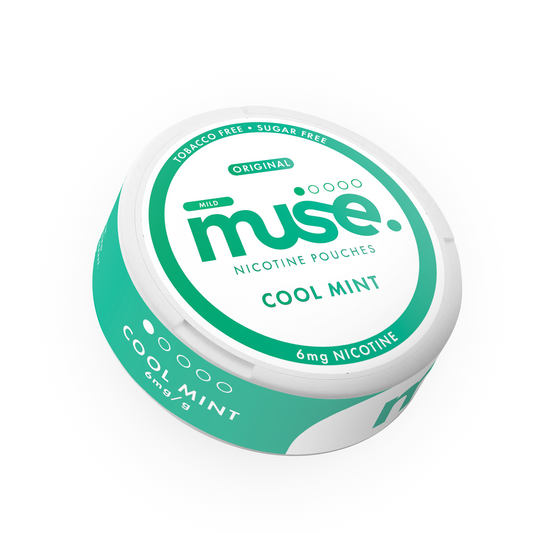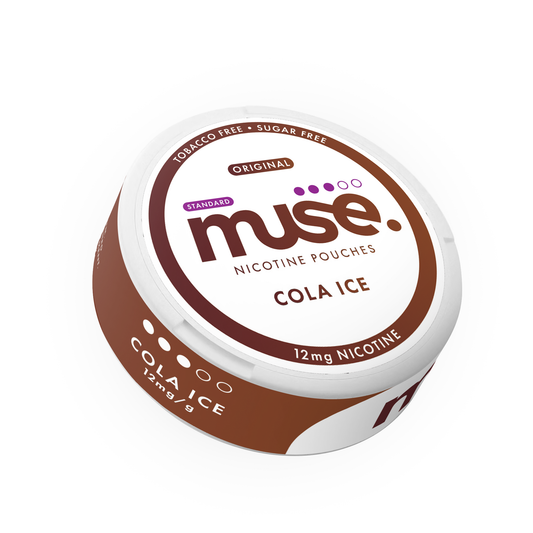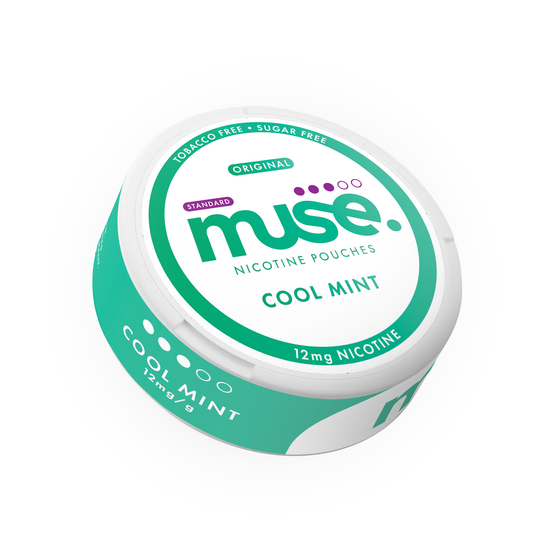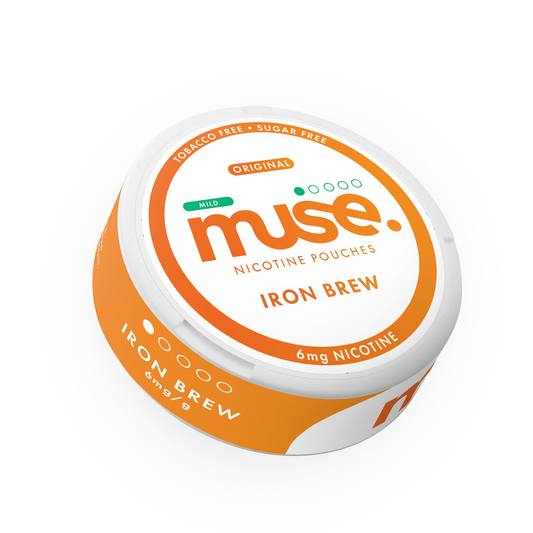Imagine a moment when you need reliable energy: a pre-dawn training session, the final hours of an urgent project, an all-nighter revision session, or the late shift at the hospital. For decades most of us reached for coffee, an energy drink, or a fizzy pre-workout. But a quieter, more portable option has been gathering momentum — caffeine pouches. Compact, discreet and engineered for performance, the strongest of these pouches (200 mg and up) are changing the game for people who demand consistent, controlled stimulation without the faff of brewing, sipping or washing up.
This is not about replacing coffee culture — it’s about giving performance seekers another tool. In this article we’ll explain what these pouches are, why formulations that combine caffeine with nootropics like Alpha GPC and L-theanine matter, and how to use them safely and effectively. Whether you’re an athlete, creative, gamer or busy professional, read on to learn why these strongest caffeine pouches could become a staple in your routine.
What are caffeine pouches?
Caffeine pouches are small, tobacco-free sachets that you place between your gum and lip; they release caffeine and other active ingredients slowly through the oral mucosa. They’re similar in concept to nicotine pouches but contain stimulants and no tobacco. Manufacturers design them for discreet, controlled release — no chewing, no spitting, and no need for water.
Key features:
- Portability: Pocket-sized, single-serve delivery.
- Discretion: Minimal smell and no obvious drinking required.
- Speed: Buccal absorption can deliver a faster onset than some oral routes.
- Dosing control: Accurate per-pouch milligram counts make dosing predictable.
Because they avoid the digestive tract initially, a portion of the caffeine can be absorbed directly into the bloodstream via the mouth lining, which can alter the experience compared with swallowing a cup of coffee.
Surge 200 mg — stacking caffeine with Alpha GPC and L-theanine
The strongest pouches on the market don’t always contain just caffeine. High-potency products such as Surge (200 mg caffeine per pouch) combine stimulants with cognitive support ingredients. Let’s unpack what that blend aims to do:
- 200 mg caffeine per pouch — roughly equivalent to three average cups of filter coffee (estimates vary by brew). This is a substantial dose, intended for experienced users seeking a powerful lift.
- Alpha GPC — a choline donor that some research suggests may support cognitive functions like working memory and attention, particularly when paired with stimulants.
- L-theanine — an amino acid commonly found in tea; it’s often included to balance caffeine’s jittery side effects by promoting a smoother, more focused sensation.
Why stack? Caffeine boosts alertness and endurance; Alpha GPC may support cognition and neuromodulation; L-theanine helps temper overstimulation. The result of this triad is an attempt to produce intense but controlled performance — maximum power, zero compromise.
Who benefits most — profiles of typical users
Not every source of caffeine is ideal for every person. Here are the performance seeker profiles for whom the strongest pouches are particularly useful.
1. Endurance and competitive athletes
For endurance athletes who manage long sessions or multiple daily workouts, a precise, easily transportable stimulant can be a big advantage. A dose before training or competition — timed carefully — can help sustain focus and perceived effort. Because pouches are smokeless and portable, athletes can use them without disrupting hygiene or competition rules (always check the governing body’s regulations).
2. Shift workers and emergency responders
People working nights or variable shifts often need reliable, immediate energy without the ritual of coffee. Pouches are discreet and eliminate the need for access to a kettle during a busy night.
3. Gamers and esports competitors
Sustained cognitive performance, quick reaction times and consistent alertness are vital in gaming. The combination of caffeine with L-theanine is popular with gamers because it aims to enhance focus while moderating jitteriness.
4. Students and knowledge workers
When deadlines loom or exam season arrives, portability and dose control matter. Pouches let users dose methodically, avoiding repeated cups of coffee that can produce peaks and crashes.
5. Creatives and professionals needing flow states
For people who need sustained concentration without constant interruption, potent pouches can be a go-to. They let you settle into a task without reaching for a drink every 45 minutes.
How caffeine pouches compare with coffee, energy drinks and pre-workouts
Let’s run a practical comparison across five dimensions.
1. Speed and onset
- Caffeine pouches: Some absorption through the mouth can offer a fast onset; overall onset still depends on swallowed portion.
- Coffee/energy drinks: Typically 15–45 minutes depending on stomach contents.
- Pre-workouts: Often similar to energy drinks, sometimes faster if taken on an empty stomach.
2. Convenience
- Pouches: Exceptionally convenient — no cup, no kettle, no waste (besides the pouch).
- Coffee: Requires preparation or purchasing.
- Energy drinks/pre-workouts: Convenient but heavier to carry and often bulky.
3. Discretion and social etiquette
- Pouches: Discreet and odourless; suitable for workplaces where drinking is awkward.
- Coffee/energy drinks: Visible and sometimes discouraged in formal settings.
4. Dose precision
- Pouches: Typically labelled with exact mg per pouch — predictable.
- Coffee: Variable depending on bean, grind and brew method.
- Energy drinks: Labelled but sometimes combined with other stimulants and sugar.
5. Side effects and crash
- Pouches: Depending on formulation, L-theanine may reduce jitteriness; no sugar crash as with sugary energy drinks.
- Coffee: Can cause stomach upset in some; stronger palatable rituals but dosing is less precise.
- Energy drinks/pre-workouts: Often contain large sugar and stimulant blends that can cause rebound fatigue.
Overall, the strongest caffeine pouches offer precision and discretion. For users who want a single, controlled hit of serious caffeine without the ritual or sugar of other formats, they are an appealing option.
The science behind the ingredients (brief & practical)
Caffeine is a central nervous system stimulant that blocks adenosine receptors, reducing feelings of tiredness and increasing alertness. When consumed in high amounts, it can increase heart rate, raise blood pressure and cause jitteriness or sleep disruption.
L-theanine is associated with relaxation without sedation. Research suggests it can moderate the stimulating effects of caffeine, smoothing concentration and reducing subjective jitteriness.
Alpha GPC (L-alpha glycerylphosphorylcholine) is a choline compound with potential cognitive benefits — it’s a precursor to acetylcholine, a neurotransmitter involved in learning and memory. Evidence is still evolving, but it’s used in nootropic stacks to support cognitive performance.
A stacked formulation aims to combine the fast energy of caffeine with cognitive substrates and calming modulators so that the stimulant effect is focused and usable rather than overwrought.
Important disclaimer: Always interpret ingredient claims with caution. While some studies support these components, effects vary between individuals. None of this is a substitute for medical advice; consult a healthcare professional with concerns.
Dosing, timing and tolerance — practical guidance
A 200 mg pouch is a high dose — equivalent to approximately three cups of filter coffee for many people. Here are practical considerations.
Start low if you’re new
- If you’re inexperienced with concentrated caffeine, start with a lower dose or split the pouch (some users place a portion behind the lip and remove halfway — but this is manufacturer dependent; check instructions).
- For context, general guidelines often suggest 200–400 mg caffeine as an upper daily intake for most healthy adults, but individual tolerance varies.
Timing matters
- Avoid strong pouches within 6 hours of planned sleep; caffeine can delay sleep onset and reduce sleep quality.
- For athletic use, take around 30–60 minutes before activity for peak effects (timing depends on personal response).
- For cognitive tasks, a shorter window (15–30 minutes) may be enough given buccal absorption.
Don’t stack unknowingly
- Avoid combining a 200 mg pouch with additional caffeinated drinks or other stimulants on the same day unless you carefully track total caffeine intake.
- Remember hidden caffeine sources (tea, chocolate, pre-workouts, some pain relievers).
Tolerance and cycling
- Regular high intake can lead to tolerance — meaning you’ll need more to feel the same effect. Consider cycling usage: use on higher-demand days and take breaks to maintain sensitivity.
Red flags and when to avoid
- Pregnant or breastfeeding individuals should avoid high doses of caffeine or consult a clinician first.
- Those with heart conditions, high blood pressure or certain psychiatric conditions should seek medical advice.
- If you experience palpitations, anxiety, dizziness or chest pain, stop use and consult a medical professional.
Safety and side effects — be sensible

Common side effects: jitteriness, increased heart rate, headaches, nausea, digestive upset, insomnia.
Less common but serious: arrhythmias, severe anxiety, panic attacks — particularly if you exceed recommended intakes or combine stimulants.
Practical safety checklist:
- Read the label and follow manufacturer guidance.
- Keep use transparent if working with anti-doping or workplace restrictions.
- Never let children or adolescents use high-dose pouches.
- Store safely away from pets (some formulations contain ingredients harmful to animals).
How to use them effectively — tips from experienced users
Ritual matters
A small ritual can make use safer and more effective. Examples:
- Decide ahead whether you’ll use a pouch on a given day (e.g., exam, race day).
- Track total caffeine that day in a simple notes app.
- Hydrate — caffeine can be diuretic for some.
- Pair with a light snack if you notice stomach upset.
Microdosing
Some users prefer microdosing across a day (small, repeated doses) rather than a single large dose to maintain steady focus. With a 200 mg pouch, microdosing is less practical unless the pouch is designed to be split.
Combine with sleep hygiene
Use pouches as a tool to manage temporary demands, not as a substitute for sleep. Long-term sleep debt can’t be reliably masked by stimulants.
Use L-theanine intentionally
If jitteriness is an issue, choose formulations with L-theanine or take a separate 100–200 mg L-theanine supplement alongside caffeine to smooth the experience.
Etiquette and public use
While discreet, using pouches in certain spaces may still raise eyebrows. Consider:
- Avoid using in workplaces with strict substance policies unless permitted.
- Be mindful in meetings — quietly slip a pouch, but don’t make a show.
- Dispose of pouches responsibly — don’t litter.
Environmental and ethical considerations
The convenience of single-serve pouches raises questions about packaging waste. When shopping:
- Look for biodegradable options or brands that offer recyclable packaging.
- Support companies with clear sourcing and transparency about ingredient testing and quality control.
Buying guide — what to look for
When choosing the strongest caffeine pouch, consider:
1. Clear labelling
- Exact caffeine content per pouch (e.g., 200 mg).
- Other active ingredients and their doses (Alpha GPC, L-theanine, vitamins).
- Allergen and excipient information.
2. Third-party testing and transparency
- Independent lab testing for purity and contaminants is a mark of quality.
- Brands that publish Certificates of Analysis (CoAs) are preferable.
3. Taste and mouthfeel
- Flavourings matter. Some users prefer unflavoured; others like mint or citrus to mask bitterness.
4. Brand reputation and reviews
- Check user reviews for consistency, effect profile and side-effect reports.
- Investigate customer support and return policies.
5. Regulatory compliance
- Ensure the product complies with local regulations and is lawful for sale in your country.
Myths and FAQs
Q: Are caffeine pouches safer than energy drinks?
A: They can be safer in some respects (no sugar, precise dosing) but potency matters — a 200 mg pouch is a strong dose and must be treated with respect. Safety depends on user behaviour.
Q: Will a 200 mg pouch get me wired?
A: If you are sensitive to caffeine, yes. That’s why starting with a lower dose or waiting to assess your response is smart.
Q: Can I use them while training?
A: Many athletes do, especially for endurance events. Check competition rules and time the pouch appropriately.
Q: Are they addictive?
A: Caffeine is habit-forming; psychological dependence is possible. Manage consumption and cycle use.
Q: Is oral absorption better?
A: Buccal absorption can speed onset for some ingredients, but overall systemic effects depend on total ingested dose and individual physiology.
Responsible use scenarios — case studies in brief
Case 1: The firefighter on a night shift
A firefighter opts for a single pouch at the start of a busy night. It helps maintain alertness without the need to pace with coffee, and the quick nature of the pouch avoids spills in the mess room. He monitors total caffeine over the 24-hour period and doesn’t combine it with energy drinks.
Case 2: The postgraduate student
A student uses a pouch before a crucial revision sprint. They choose a formulation with L-theanine to reduce anxiousness and stop use by mid-afternoon to protect sleep.
Case 3: The marathon runner
A marathon runner times the pouch 45 minutes before the race start. The pouch’s predictable dosage helps with pre-race routine and avoids gastrointestinal issues sometimes caused by drinking large volumes during warm-ups.
For performance seekers who want precision, portability and a chance to balance intensity with cognitive clarity, the strongest caffeine pouches represent a clear evolution in stimulant delivery. They’re not a one-size-fits-all solution — high potency demands respect — but for those who use them thoughtfully, they offer measurable advantages over more traditional caffeine sources.








